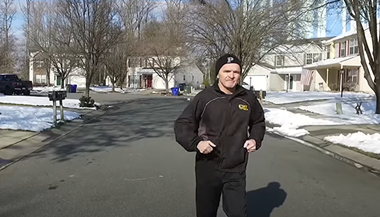Compression Fractures
What is a Compression Fracture?
A compression fracture is a type of broken bone that can cause your vertebrae to collapse, making them shorter. This often happens to the front of the vertebrae but not the back, causing you to stoop forward over time.Compression fractures are caused by:
Osteoporosis, a weakening of the bones that can occur in postmenopausal women and older men
Injuries
Tumors
What are the Symptoms of a Compression Fracture?
If a compression fracture develops quickly, you may feel sudden, severe back pain. A fracture doesn’t always cause immediate symptoms, though. Instead, your doctor may notice it when giving you an X-ray for another reason.When a compression fracture starts harming vertebrae, you may feel:
-
Slowly worsening back pain — lying on your back may relieve the pain and standing may make it worse
-
Decreased height
-
Stooped-over posture
-
Numbness or tingling, weak muscles, problems walking and (possible) trouble controlling your bowels or bladder because of nerve damage
Compression Fracture Prevention
You can reduce your risk for a compression fracture by taking a few key steps, similar to the precautions for avoiding osteoporosis:
-
Consume enough vitamin D and calcium — including such calcium-rich foods as milk, cottage cheese, yogurt, sardines and broccoli
-
Get a bone density test if you fall into a higher-risk category for osteoporosis
-
Take medications to prevent bone loss or spur bone growth, as prescribed by your doctor (fracture patients are at high risk for additional fractures)
-
Stop smoking, to reduce the risk of osteoporosis and some types of cancer that can spread to the bones
-
Avoid excessive drinking
Compression Fracture Diagnosis
Your doctor will begin to diagnose a possible compression fracture with a physical exam and will check whether your upper spine is hunched forward. You may also receive one or more scans:
-
Bone Density Test (if osteoporosis is suspected)
-
Computed Tomography Scan (CT or CAT scan)
Compression Fracture Treatment
Treatment for a compression fracture depends on the nature of the break and the likely cause. Our non-surgical approaches include:
-
Taking pain medications
-
Resting in bed until better
-
Wearing a back brace
-
Going to physical therapy
-
Treating osteoporosis if bone weakening is suspected
Our surgical options include:
-
Fusion: Repairing the bone and joining vertebrae together after an injury
-
Tumor treatment: Removing bone (if needed) to treat a tumor
-
Kyphoplasty: Making the vertebrae taller with a small balloon placed with a needle, then filling the empty space with a special cement. This procedure can help with pain from a vertebral fracture that persists more than 6 weeks, but it does have risks. Potential risks of this procedure should be discussed with your doctor.






